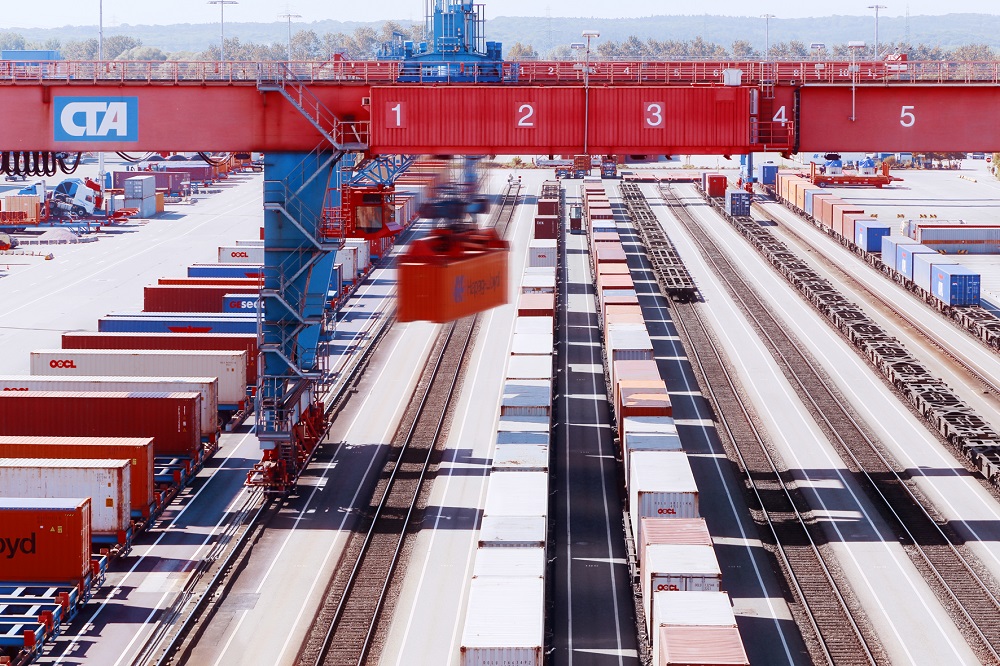Expansion of Germanys Largest Container Rail Terminal Completed
14th July 2016

Hamburger Hafen und Logistik AG (HHLA) has completed the expansion of the rail terminal at its Container Terminal Altenwerder (CTA) significantly earlier than planned. Following the construction period, regular operations will resume as early as 1 August 2016, which is two months sooner than originally calculated. The CTAs rail terminal now has nine tracks, instead of the previous seven. The expansion will increase the terminals capacity by 140,000 standard containers (TEU) to 930,000 TEU per year.
Since 2010, annual container throughput at the CTA rail terminal has risen by almost 20 percent to 769,000 TEU in 2015. This means that, once again, the CTAs terminal had the highest throughput of any container rail terminal in Germany. Rails share of total container volume has also continued to grow in recent years. The German Federal Ministry of Transport expects that transport services of rail freight traffic will increase by 43 percent by 2030.
Dr. Stefan Behn, member of the Executive Board of Hamburger Hafen und Logistik AG, emphasises the significance of the rail terminal expansion: The expansion of the rail terminal will enable us to ensure the efficiency of the state-of-the-art HHLA Container Terminal Altenwerder. It means that we are well prepared for a further shift in volume towards rail as a mode of transport. We are thus strengthening Hamburg as a rail port.
Dr. Bernd Pahnke, Vice President Port Development DB Cargo, highlights: Since January 2016, we have been working with six other companies to optimise shunting operations at the Port of Hamburg. In doing so, we are significantly increasing the competitiveness of the location. We were able to effectively support the expansion of the CTA rail terminal during the construction period with a performance rate of over 95 percent. The expansion will benefit us in light of a further shift towards rail transport.
Since 2010, annual container throughput at the CTA rail terminal has risen by almost 20 percent to 769,000 TEU in 2015. This means that, once again, the CTAs rail terminal had the highest throughput of any container rail terminal in Germany. Rails share of total container volume has also continued to grow in recent years.
The total area of the CTAs rail terminal has not been affected by the expansion, as the two additional tracks were built on the existing area. This increases the facilitys efficient use of space, which is already high. The distance between the tracks has become smaller, meaning that checking the container data will no longer be done, as before, by terminal staff who would drive along between the trains in vehicles known as checkmobiles. For this reason, a train gate had to be built. This train gate automatically records the container data as trains enter the terminal. The automatic recording is quicker than the manual recording carried out previously, which means that the train-handling operations can begin sooner. By no longer using the diesel-powered checkmobiles, emissions of harmful CO2 at the already largely electrified CTA can also be further reduced.

